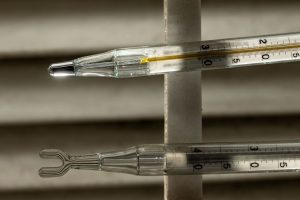November
ECMWF is the European Centre for Medium-Range Weather Forecasts.
We are both a research institute and a 24/7 operational service, producing global numerical weather predictions and other data for our Member and Co-operating States and the broader community. The Centre has one of the largest supercomputer facilities and meteorological data archives in the world. Other strategic activities include delivering advanced training and assisting the WMO in implementing its programmes.
We are a key player in Copernicus, the Earth Observation component of the European Union’s Space programme, offering quality-assured information on climate change (Copernicus Climate Change Service), atmospheric composition (Copernicus Atmosphere Monitoring Service), flooding and fire danger (Copernicus Emergency Management Service), and through the EU's Destination Earth initiative, we are developing prototype digital twins of the Earth.
Pavel Tříska headed for many years the ionospheric department of the Institute of Geophysics, which was later transferred to the Institute of Atmospheric Physics of the CAS. He was PI of all Czechoslovak and later Czech satellites of the MAGION series. These satellites were built mainly thanks to his initiative.
Until 1952 there were several scientific organisations in Czechoslovakia. First of all, there was the Czech Academy of Sciences and Arts (originally the Emperor Franz Joseph Czech Academy for Sciences, Literature and Arts, founded in 1890), then the older Royal Czech Society of Sciences (founded in early 1770s), two institutions founded after 1918 (the Masaryk Academy of Labour and the Czechoslovak National Research Council), and the Scientific Research Centre established in 1949. All these organisations were merged into the Czechoslovak Academy of Sciences in 1952.
 Meteosat First Generation (MFG) was a series of seven meteorological satellites operated by the European Organisation for the Exploitation of Meteorological Satellites (EUMETSAT), which began in November 1977 with the launch of Meteosat-1. The MFG continuously provided economically available satellite data and related meteorological services and ended in 2017 with the launch of Meteosat-7. The first Meteosat-1 satellite ended its life on 24 November 1979.
Meteosat First Generation (MFG) was a series of seven meteorological satellites operated by the European Organisation for the Exploitation of Meteorological Satellites (EUMETSAT), which began in November 1977 with the launch of Meteosat-1. The MFG continuously provided economically available satellite data and related meteorological services and ended in 2017 with the launch of Meteosat-7. The first Meteosat-1 satellite ended its life on 24 November 1979.

